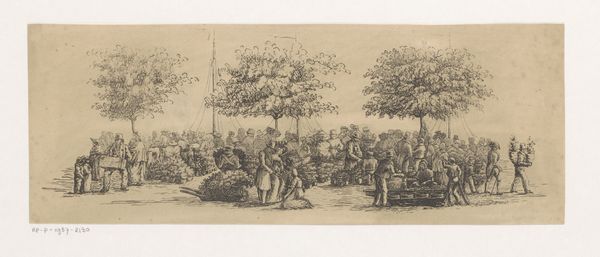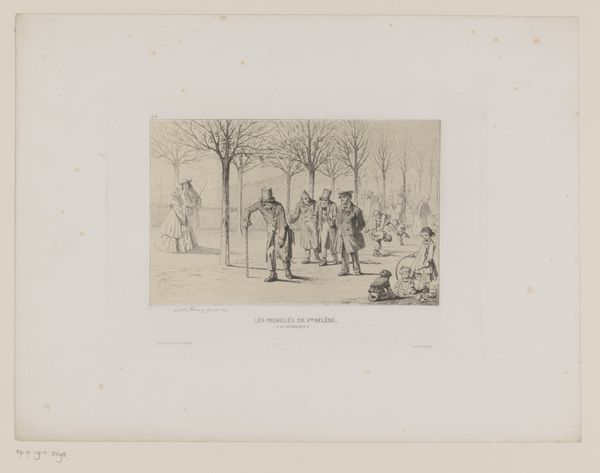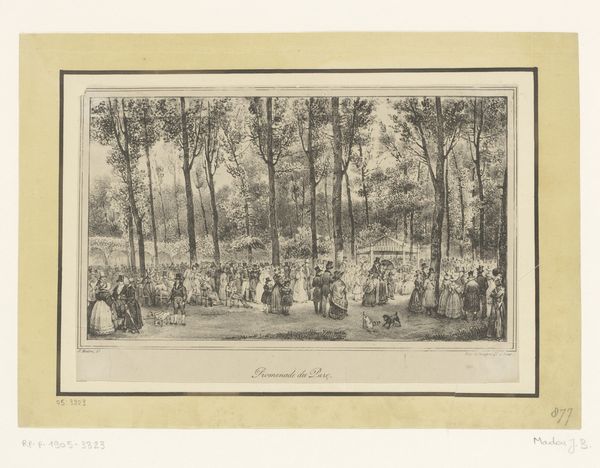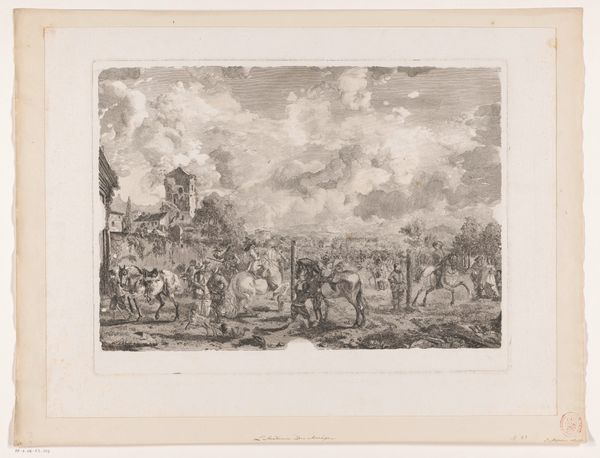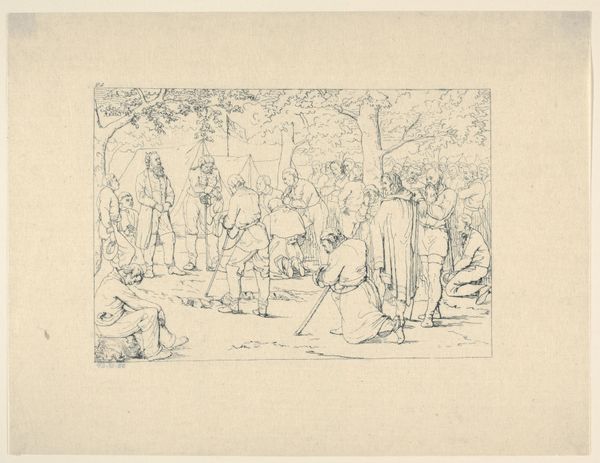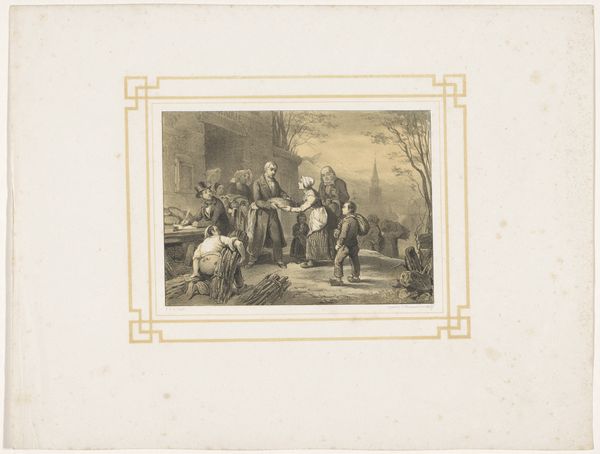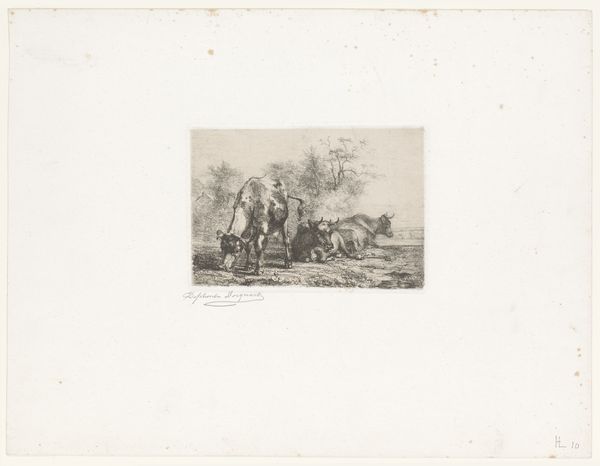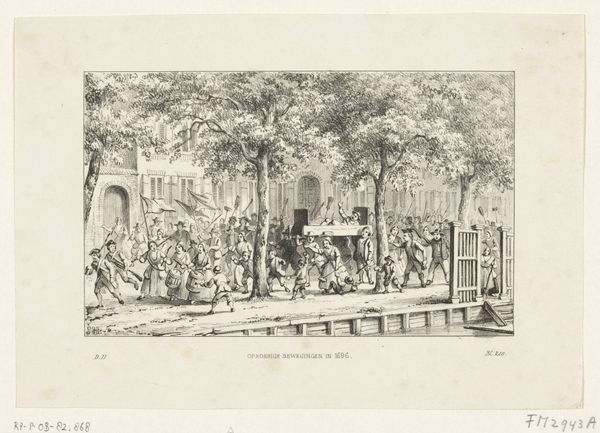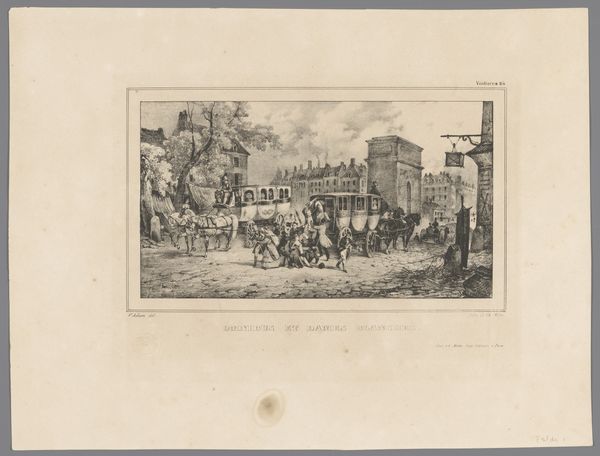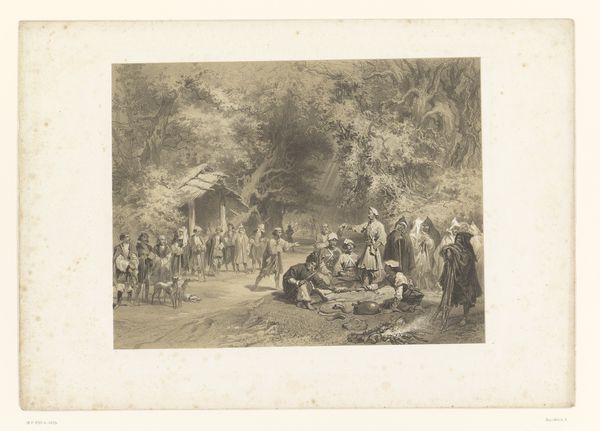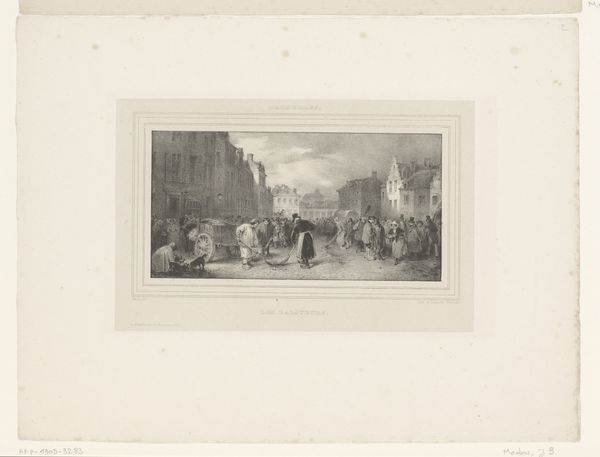
print, plein-air, paper, ink, engraving
#
ink paper printed
# print
#
plein-air
#
light coloured
#
landscape
#
white palette
#
paper
#
ink
#
horse
#
genre-painting
#
engraving
#
realism
Dimensions: height 165 mm, width 227 mm
Copyright: Rijks Museum: Open Domain
Léopold Flameng created this print of the Paardenmarkt using etching, a printmaking technique that relies on acid to bite into a metal plate, creating lines that hold ink. The artist would have covered a metal plate with a waxy, acid-resistant ground, then scratched an image into it with a needle. The plate was then immersed in acid, which bit into the exposed metal. By controlling the depth of the bite, Flameng could create a range of tones. The amount of work involved is considerable. Once the plate was prepared, it could be inked and printed multiple times. This reproducibility aligns with the rise of mass media during the Industrial Revolution. Consider how this etching differs from a unique work, like a painting. Printmaking allowed for wider distribution of imagery, playing a role in shaping public opinion and spreading cultural trends. So, next time you look at a print, think about the many steps involved and the social context that enabled its creation.
Comments
No comments
Be the first to comment and join the conversation on the ultimate creative platform.
